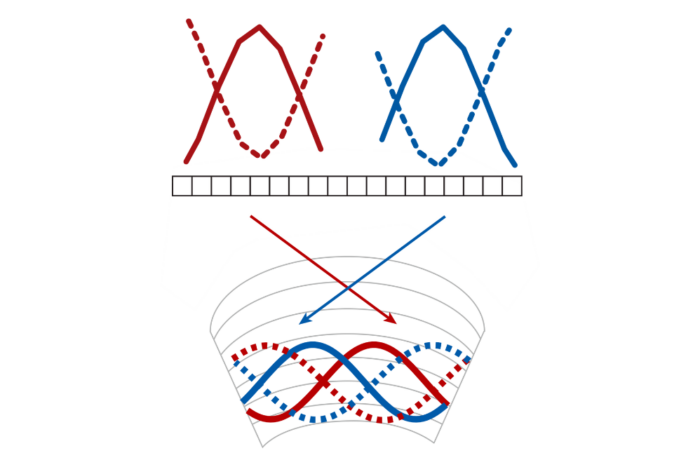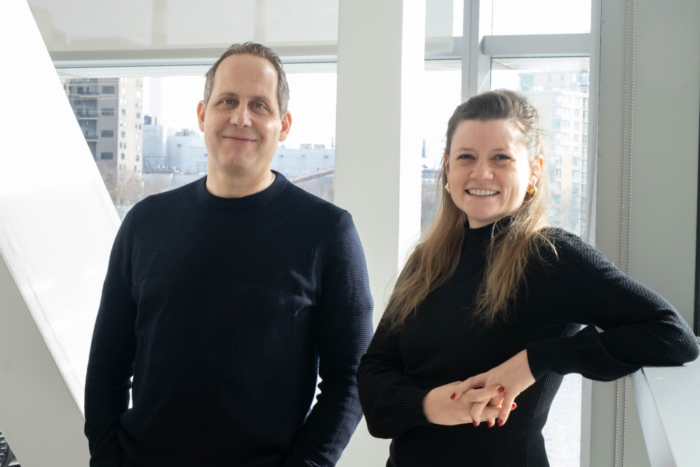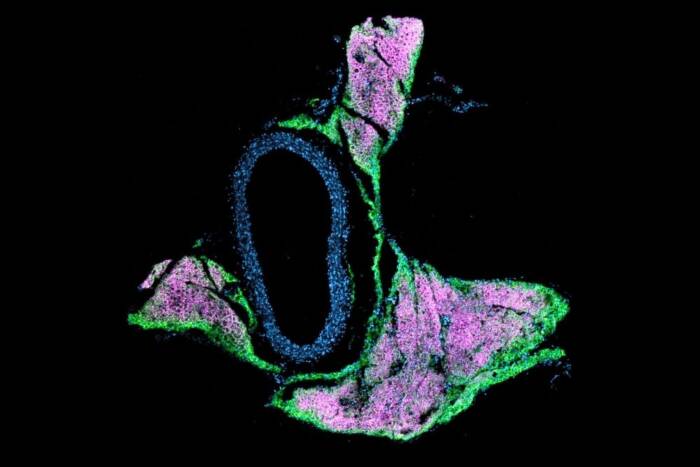Joseph Luna named David Rockefeller Fellow
by ZACH VEILLEUX
Joseph Luna, a native of El Paso, Texas and a graduate of Yale University who is exploring host-virus interactions at the RNA level, has been awarded this year’s David Rockefeller Fellowship. The David Rockefeller Fellowship has been presented annually since 1998 to an outstanding third-year student who demonstrates exceptional promise as both a scientist and a leader.
After receiving his bachelor’s degree in molecular biophysics and biochemistry in 2006, Mr. Luna remained at Yale for two additional years, further honing his laboratory skills as a National Institutes of Health Post-baccalaureate Research Scholar and as a research assistant. He enrolled at Rockefeller in 2008, and almost immediately formulated an ambitious project to study the involvement of RNA in host-virus interactions using next-generation sequencing developed by Robert B. Darnell. The idea required setting up shop in both the Laboratory of Neuro-oncology, which Dr. Darnell heads, and in the Laboratory of Virology and Infectious Disease, led by Charles M. Rice.
“Joe was someone who could lead such a joint project with enthusiasm and scientific vigor,” says Dr. Darnell. “Joe is simply having a blast, as fully engaged as one could possibly hope for from a young scientist.”
The technique Mr. Luna is using, called HITS-CLIP, gives researchers a global view of the RNA sequences linked to a particular protein. Although Dr. Darnell’s lab has been using it to understand the role of small RNAs in neurons, it had not previously been applied to questions of viral infection and replication. Using the hepatitis C virus — and occasionally other viruses — Mr. Luna is working to understand what’s going on at the RNA level that permits certain viral invaders to ultimately take over a susceptible host cell.
“At the cellular level, the battle between a virus and a host cell is typically waged by proteins,” says Mr. Luna. “What I’m trying to do is observe an analogous struggle at the informational, that is, the RNA level. The CLIP technique is allowing me to measure the changes that occur in the RNA that give either the virus or the cell an advantage.”
Drawn to microbiology for its relatively clear and well-defined problems — and to Rockefeller for its unstructured approach to learning as well as its storied past in virology — Mr. Luna has made the most of his time here, becoming involved not only with two distinct labs, but with several extracurriculars as well. He is an avid historian, who spends his spare moments looking into the past to create a map of legendary spaces on the university’s campus. He writes regularly for the student publication Natural Selections, and has served on its editorial board since his first year at Rockefeller. He is a serious runner, and completed last year’s New York City marathon in about three and a half hours. And, using a small letter-press that he keeps in his apartment, he also practices the art of old-fashioned type-setting.
“Joe’s dedication to science, his outstanding research accomplishments and his community service exemplify what Rockefeller seeks to cultivate in its graduate students,” said Marc Tessier-Lavigne, the university’s president, during his presentation of the fellowship. “These characteristics — independence, commitment to science, leadership and community spirit — are the qualities that Joe has so clearly demonstrated.”



